Göttingen: a circle of Nobel Prize winning scientists
What: Circular feature celebrating Nobel Prize winners, all of whom worked at the city’s university.
Where: Stadtfriedhof (city cemetery) in Göttingen.
Göttingen is a university town in central Germany. Not only will I find a memorial to Nobel Prizes, I’m here also to acknowledge my academic training. I spent many years studying physics and astronomy, and while I’m no longer active in science research, I enjoy the search and discovery of the final resting spots for scientists whose work formed a significant part of my education. Visiting their graves provides direct historical connection to “academic predecessors”; to go beyond the abstraction of simply learning their names and contributions to science, the gravestones belong to real people with keen minds, family lives, and all too human imperfections.
45 Nobel Prize laureates have been or are connected with the Georg-August-Universität Göttingen as of posting (2018). That’s a phenomenal number, as this single institution accounts for 8 per cent of all Nobel Prizes (585 as of 2017).
Highlights
- Nobel Rondel
- Max BORN
- Otto HAHN
- Max von LAUE
- Walther NERNST
- Max PLANCK
- Otto WALLACH
- Adolf WINDAUS
- Richard ZSIGMONDY
- Directions
Nobel Rondel
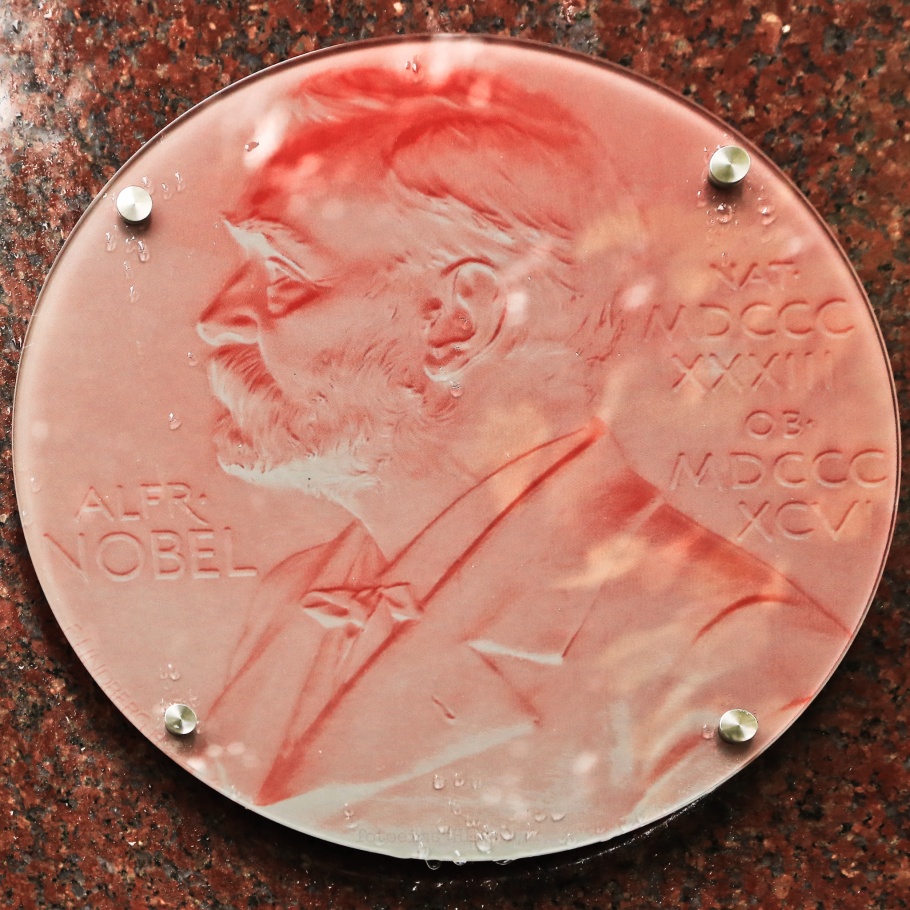

While the Chinese already knew about gunpowder since the 9th-century AD/CE, Swedish chemist Alfred Nobel (1833–1896) figured out how to stabilize and invent dynamite in the second half of the 19th-century. Safer demolition with stable explosives meant a big fortune for Nobel, and in his final will, he aside funds and instituted prizes to award the highest distinctions in chemistry, literature, medicine/physiology, peace, and physics.
Near the southern wall of Stadtfriedhof cemetery in Göttingen in an open-air round structure, the Nobel Rondell honours eight Nobel Prize laureates: Max Born, Otto Hahn, Max von Laue, Walther Nernst, Max Planck, Otto Wallach, Adolf Windaus, and Richard Zsigmondy. The Nobel Rondel was designed by Hans Otto Arnold and unveiled to the public in 2006; a description of the “Nobelrondell” in German is provided here. The eight Nobel Prize laureates have their own respective (red) plaques in the round, and there’s room for more in the future. Each plaque provides in German a short history of each laureate and their contributions. Gravestones for each of the laureates are in various spots throughout the cemetery.
From the heady days of undergraduate physics, I remember the impact of having learned the contributions by Planck and Born to quantum-physics and -mechanics, and by von Laue to solid-state physics.
Max Born

Max and Hedwig Born
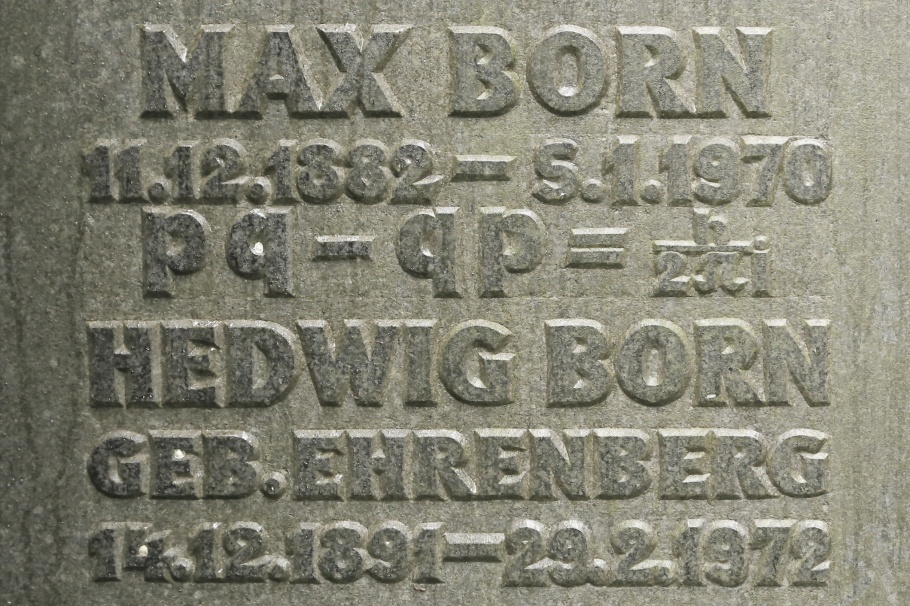
Max Born (1882–1970) shared the 1954 Nobel Prize in Physics with Walther Bothe (1891-1957). Born was lauded for “his fundamental research in quantum mechanics, especially for his statistical interpretation of the wavefunction”:
In Niels Bohr’s theory of the atom, electrons absorb and emit radiation of fixed wavelengths when jumping between orbits around a nucleus. Bohr’s theory provided a good description of the spectrum created by the hydrogen atom, but needed much more to describe spectra from heavier atoms and molecules. Following Werner Heisenberg’s initial work around 1925, Max Born contributed to further development of quantum mechanics, and also proved that Erwin Schrödinger’s wave equation could be interpreted as giving statistical (rather than exact) predictions of physical variables.
On Born’s gravestone is an equation which may look odd; for me, the innocuous-looking equation was a dramatic change in thinking. In classical mechanics, p and q represent macroscopic quantities for momentum and position, respectively, which means the equation [p,q] = pq-qp is equal to zero. The quantum mechanics version of this equation, however, is not equal to zero. In quantum mechanics, the Born commutator with momentum-operator P and position-operator Q acting on wavefunctions is written as:
This “quantum condition” with a very small but non-zero value points to the development of Heisenberg’s uncertainty principle.
(Max Born was the maternal grandfather of English-Australian actor and singer Olivia Newton-John.)
Otto Hahn
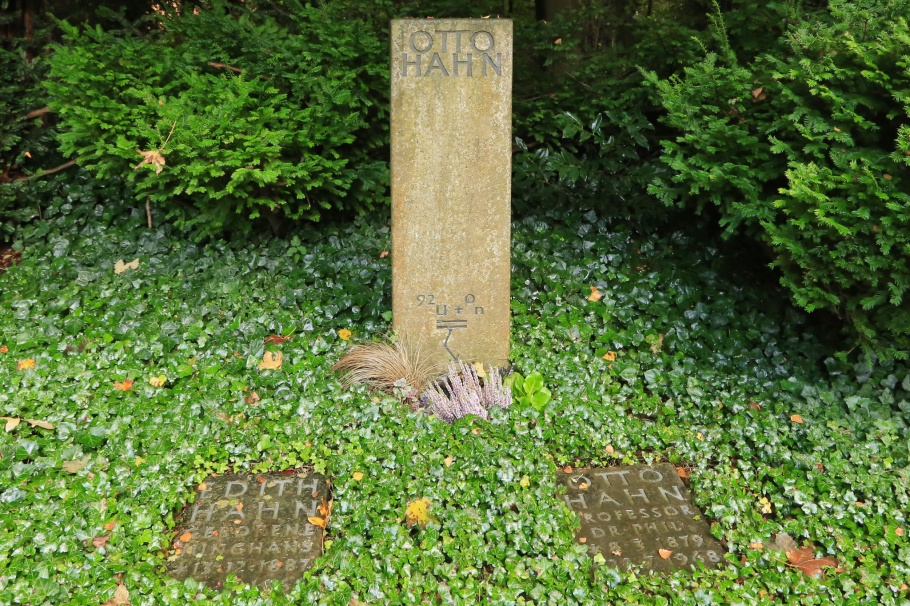
Otto and Edith Hahn

Otto Hahn (1879–1968) was awarded the 1944 Nobel Prize in Chemistry for the experimental discovery of induced nuclear fission of heavy elements. After absorbing a thermal neutron, a uranium atom splits apart into fast-moving lighter elements, a small number of free neutrons, and gamma-ray radiation.
The discovery of the neutron in 1932 provided a powerful new tool for investigating atoms. When Otto Hahn and Fritz Strassman irradiated uranium with neutrons in 1939, they created barium, which was far too light an element to be a decay product of uranium. Otto Hahn’s long-time colleague, Lise Meitner, and her nephew, Otto Frisch, tackled the problem from a theoretical standpoint and proved that the uranium nucleus had been split. This phenomenon called “fission” proved to be a critical step in the development of atomic weapons and nuclear energy.
Lise Meitner should also have been credited with the Nobel Prize for her work and contributions to the discovery; see this Brain Pickings post.
Max von Laue
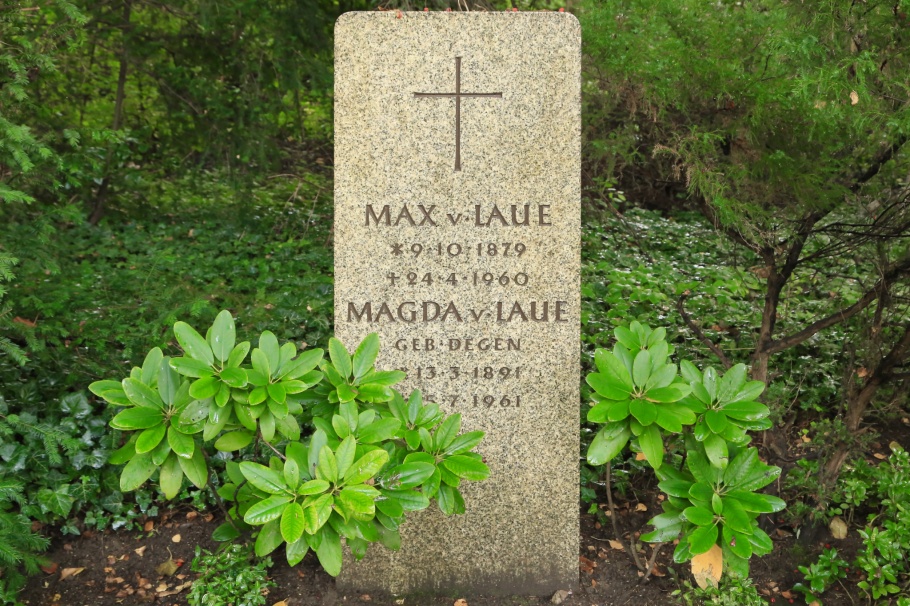
Max and Magda von Laue
Max von Laue (1879–1960) was awarded the 1914 Nobel Prize in Physics “for his discovery of the diffraction of X-rays by crystals”:
A phenomenon known as “diffraction” occurs when light waves pass through small, tightly spaced openings in a screen. In 1912, Max von Laue came upon the idea that X-rays passing through crystals might create similar patterns; the crystal’s structure would act like openings in a screen. With subseequent confirmation, experiments demonstrated that X-ray radiation could also be described as waves and that diffraction patterns could be used to determine the structures of crystals.
With the discovery of “Röntgen rays” or X-rays by Wilhelm Röntgen (for which he would be awarded the 1901 Nobel Prize in Physics), von Laue’s work was the early development of crystallography which is the study of the structure and properties of crystals.
Walther Nernst
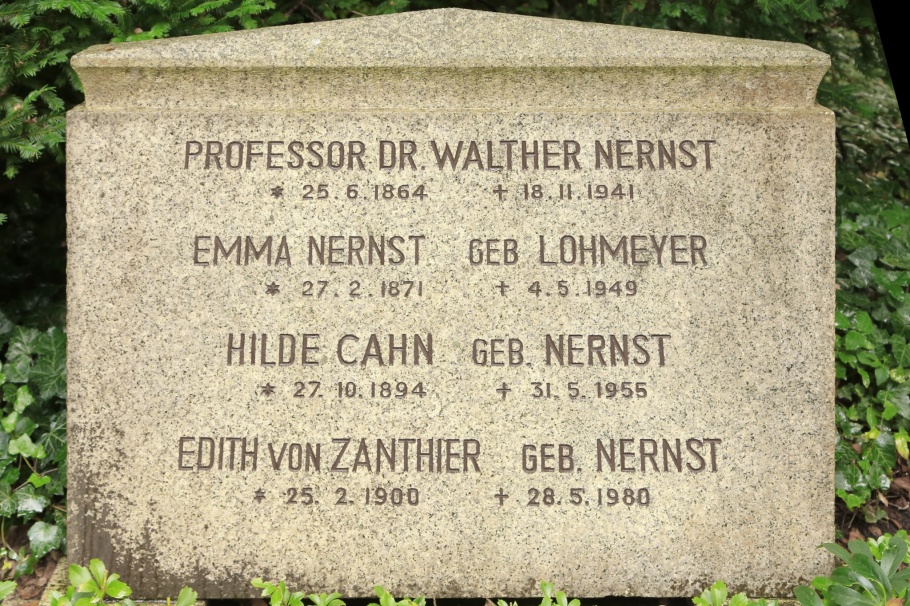
Walther and Emma Nernst, and their family
Walther Nernst (1864–1941) was awarded the 1920 Nobel Prize in Chemistry “in recognition of his work in thermochemistry”:
“During chemical reactions, atoms and molecules regroup and form new organized clusters. In most cases chemical reactions are not complete without an ensuing chemical equilibrium that depends on the temperature. In almost all chemical reactions heat is released or absorbed. In 1912 Nernst was able to formulate the Third Law of Thermodynamics to calculate chemical equilibria on the basis of heat exchange by studying conditions and reactions at very low temperatures.”
Max Planck
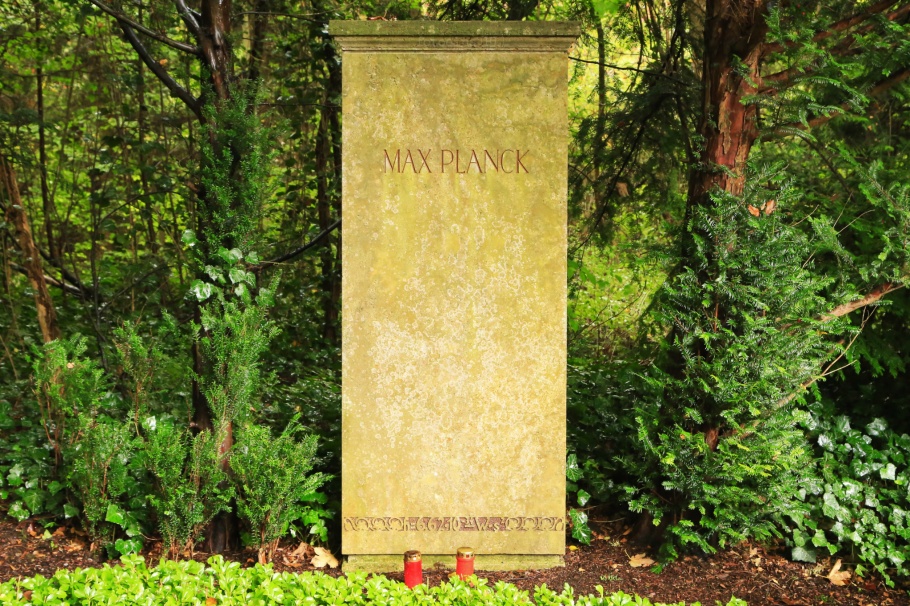
Max Planck, his second wife Marga von Hoesslin, and their family
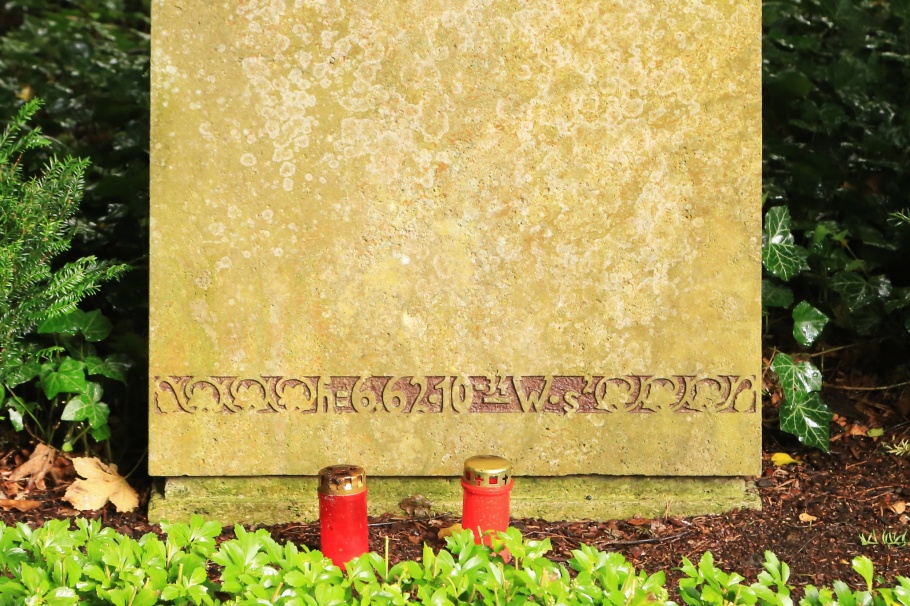
At the bottom of the gravestone is “Planck’s constant.”
Max Planck (1858–1947) was awarded the 1918 Nobel Prize in Physics “in recognition of the services he rendered to the advancement of Physics by his discovery of energy quanta”:
When a blackbody is heated, the electromagnetic radiation emitted by the blackbody has a spectrum corresponding to the temperature of the blackbody and not to its composition. Calculating the form of the spectrum using then-known physical laws gave an unreasonable result called the “ultraviolet catastrophe”; radiation at high-frequencies became infinite. Planck solved this problem in 1900 by introducing the theory of “light quanta”; that radiation consists of discrete “packets” with specific energies determined by a new fundamental constant called Planck’s constant.
What Planck determined was massive to physics:
• In 1905, Albert Einstein hypothesized that radiation with energy, E, was directly proportional to frequency, f, with the Planck constant, h as proportionality constant:
Using this hypothesis, Einstein predicted the photoelectric effect which was verified in 1914-1916 experiments by Robert Millikan. For the photoelectric effect, Einstein was awarded the 1921 Nobel Prize in Physics, and Millikan was awarded the 1923 Nobel Prize in Physics.
• The Planck law of blackbody radiation is an equation determining the spectral energy density of radiation emission at every wavelength for a specified temperature; see here and here. Using this equation, the first estimates of the value of h were derived with experimental data on blackbody radiation at the time.
• The term “photon” referring to an individual quantum or packet of light was coined in 1926 by chemist Gilbert N. Lewis.
Inscribed at the bottom of Planck’s stone marker is the value of the Planck constant:
The constant is a very small number, and the physical units are Watt times seconds squared, or Joule times seconds. Why the constant is labeled h and not p might be left as an exercise to the reader.
Years later, I would have the privilege of working as a research scientist for a short time at an astronomy institute and the foundation, both of which bear Planck’s name.
Otto Wallach
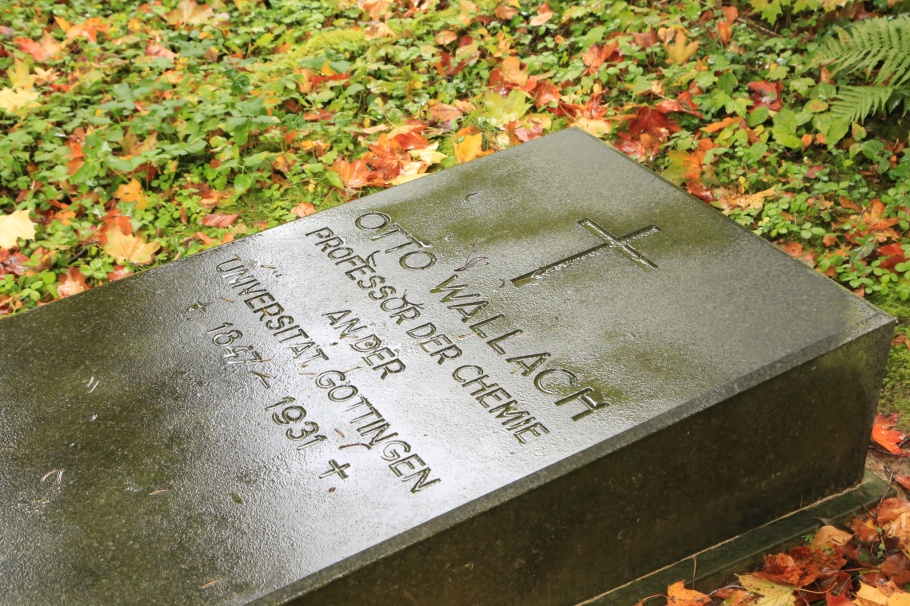
Otto Wallach
Otto Wallach (1847–1931) was awarded the 1910 Nobel Prize in Chemistry “in recognition of his services to organic chemistry and the chemical industry by his pioneer work in the field of alicyclic compounds”:
Terpenes are a large and varied group of hydrocarbon compounds existing in many fragrant substances found in nature, including turpentine and other essential oils. In the 1880s Wallach studied these substances and developed methods for extracting different terpenes from mixtures. He showed many substances were mixtures of a small number of terpenes and terpenes could be altered from one to another. Wallach’s work became significant within the chemical industry where essential oils are used in perfume and food.
Adolf Windaus
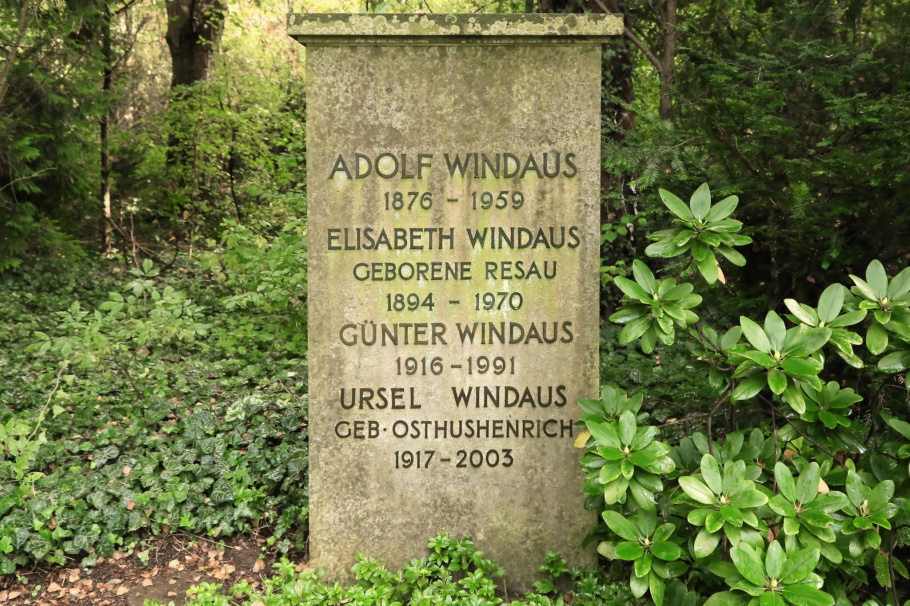
Adolf and Elisabeth Windaus, and their family
Adolf Windaus (1876–1959) was awarded the 1928 Nobel Prize in Chemistry “for the services rendered through his research into the constitution of the sterols and their connection with the vitamins”:
Cholesterol is an important component in the body’s cells and plays a major role in several biochemical processes. During the 1920s Windaus studied the composition of cholesterol and closely related substances called sterols, and established the sterols’ relationship with bilic acids. Windaus also found that another sterol, ergosterol, had the ability to cure rickets, a disease caused by vitamin-D deficiency and characterized by bone weakness. He was able to show vitamin D formed out of ergosterol under the influence of ultraviolet light.
Richard Zsigmondy
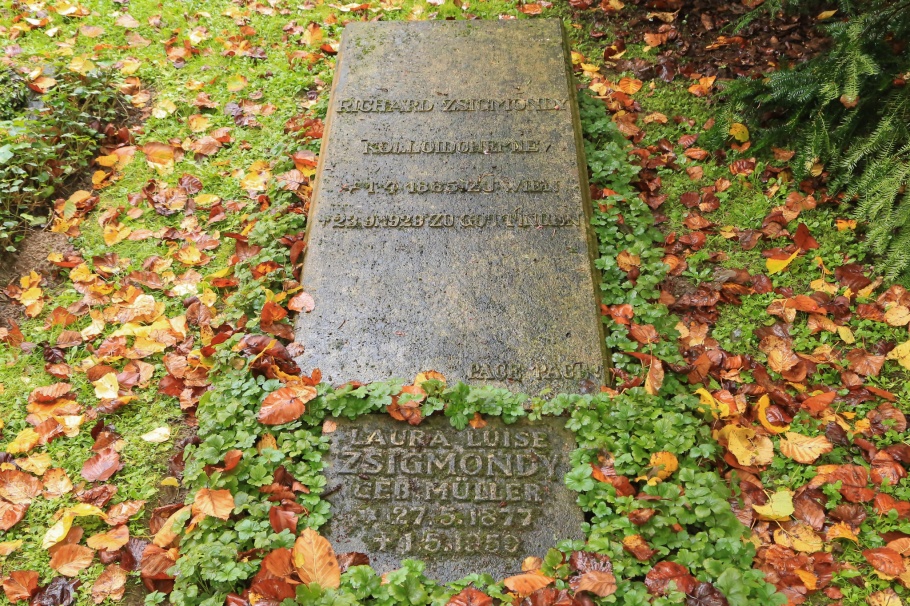
Richard and Laura Zsigmondy
Richard Zsigmondy (1865–1929) was born in Vienna; obtained his doctorate in chemistry from the University of Erlangen in 1889; and became Professor and Director at the University of Göttingen’s Institute for organic chemistry from 1909 to 1929. He was awarded the 1925 Nobel Prize in Chemistry “for his demonstration of the heterogenous nature of colloid solutions and for the methods he used, which have since become fundamental in modern colloid chemistry”:
In chemistry, very small particles which are finely dispersed in another substance are called colloids. Colloid particles can be so small that they cannot be observed in a regular microscope; that is, the sizes of colloid particles can be smaller than visual wavelengths*. In 1902 Zsigmondy helped develop the ultramicroscope which uses light scattering; the viewing angle is perpendicular to the direction of illumination. Zsigmondy used the ultramicroscope to show the heterogeneous structure of colloids which contain very small particles with a range of sizes.
Directions
Frequent express and regional trains stop in Göttingen on the corridor between Hannover and Kassel. From Göttingen Hauptbahnhof (main train station), walk from the station to stop “Bahnhof/ZOB” to catch bus 61 (direction “Hetjershausen”) or bus 62 (direction “Groß Ellershausen”) for the 5-minute ride to stop “Stadtfriedhof”. From bus stop “Markt” in the city centre, catch bus 31 (direction “Kauf Park”), bus 32 (direction “Kauf Park”), bus 61 (direction “Hetjershausen”), or bus 62 (direction Groß Ellershausen) for the 6-minute ride to stop “Stadtfriedhof.” The local transport authority is the GöVB Göttinger Verkehrsbetriebe.
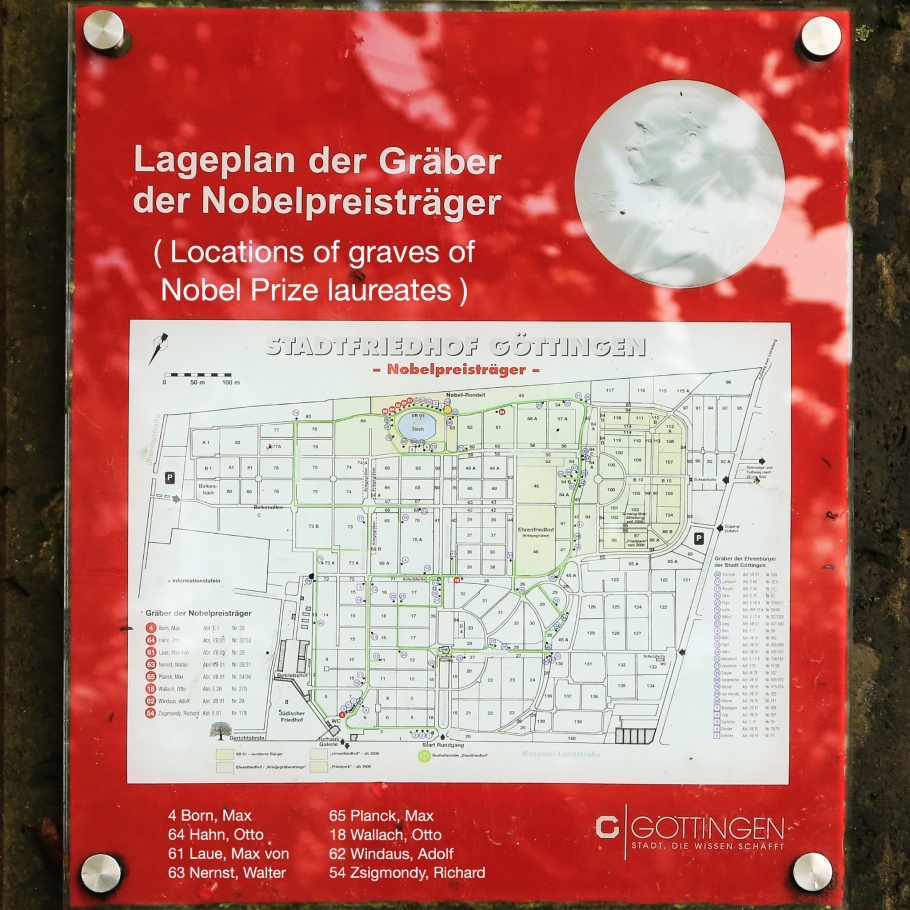
Map of the Göttingen Stadtfriedhof, with north at bottom. The Nobel Rondel is the filled yellow circle at top-centre; locations of 8 Nobel Prize laureates are shown as filled red circles.
* Visual-light or -radiation is typically in the wavelength range 400 to 800 nanometres (0.4 to 0.8 micrometres). Human eyes are most sensitive to light at 555 nanometres (“green”) under average daylight conditions.
I made all of the photos above on 2 October 2017 with a Canon EOS6D mark1. This post appears on Fotoeins Fotografie at fotoeins DOT com as https://wp.me/p1BIdT-aSk.
5 Responses to “Göttingen: a circle of Nobel Prize winning scientists”
[…] Max BORN […]
LikeLiked by 1 person
[…] should have been honoured as co-Laureate for the 1944 Nobel Prize in Chemistry awarded solely to Otto Hahn. In mid-2016, the University of Vienna unveiled a monument in her […]
LikeLike
[…] Memorial dedicated to 8 Nobel Prize winners: Göttingen Stadtfriedhof (city cemetery), NI – 2 Oct 2017. […]
LikeLike
[…] to the advancement of Physics by his discovery of energy quanta”. I paid my respects at Planck’s grave in Göttingen. The principal physical constant in quantum physics is named after Planck, and I mused about why […]
LikeLike
[…] • University of Technology, 1872–present; formerly called Imperial & Royal Polytechnic Institute, 1818–1872. • Ferstel student at Polytechnic Institute 1843–1847; years later, he returned as professor, and subsequently fulfilled roles as dean and rector. • Ferstel honoured with memorial bust by sculptor Artur Kaan in 1903. • The institution’s many alumni include: Fritz Lang, Christian Doppler, Josef Frank, Eduard van der Nüll, Friedrich Ohmann, August Sicard von Sicardsburg, Camillo Sitte, Josef Strauss, Richard Zsigmondy. […]
LikeLike